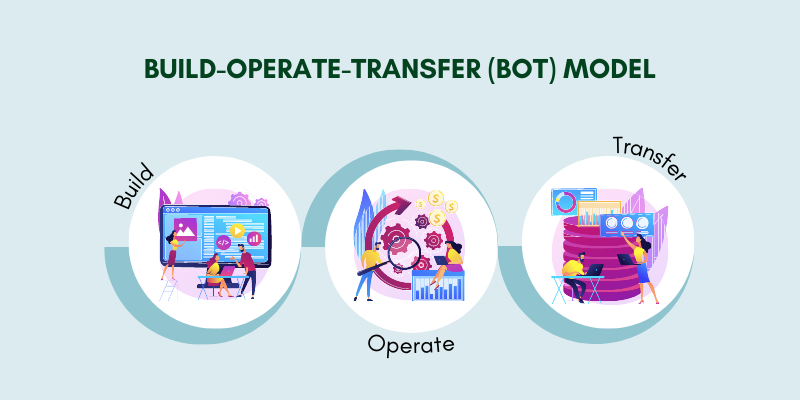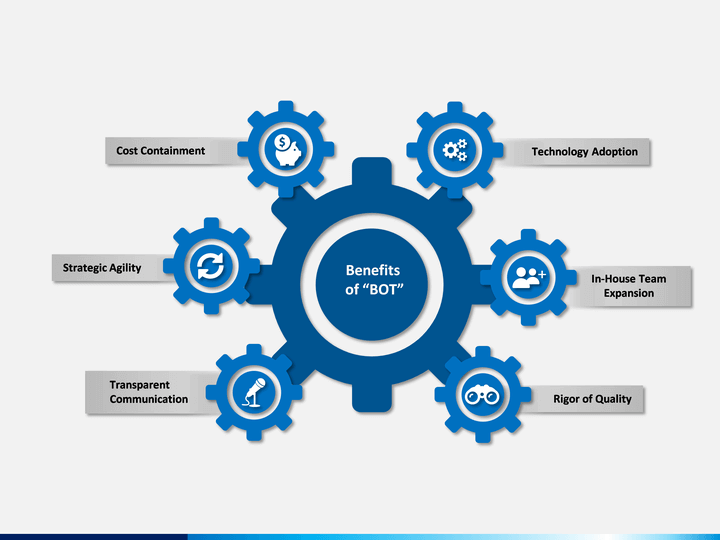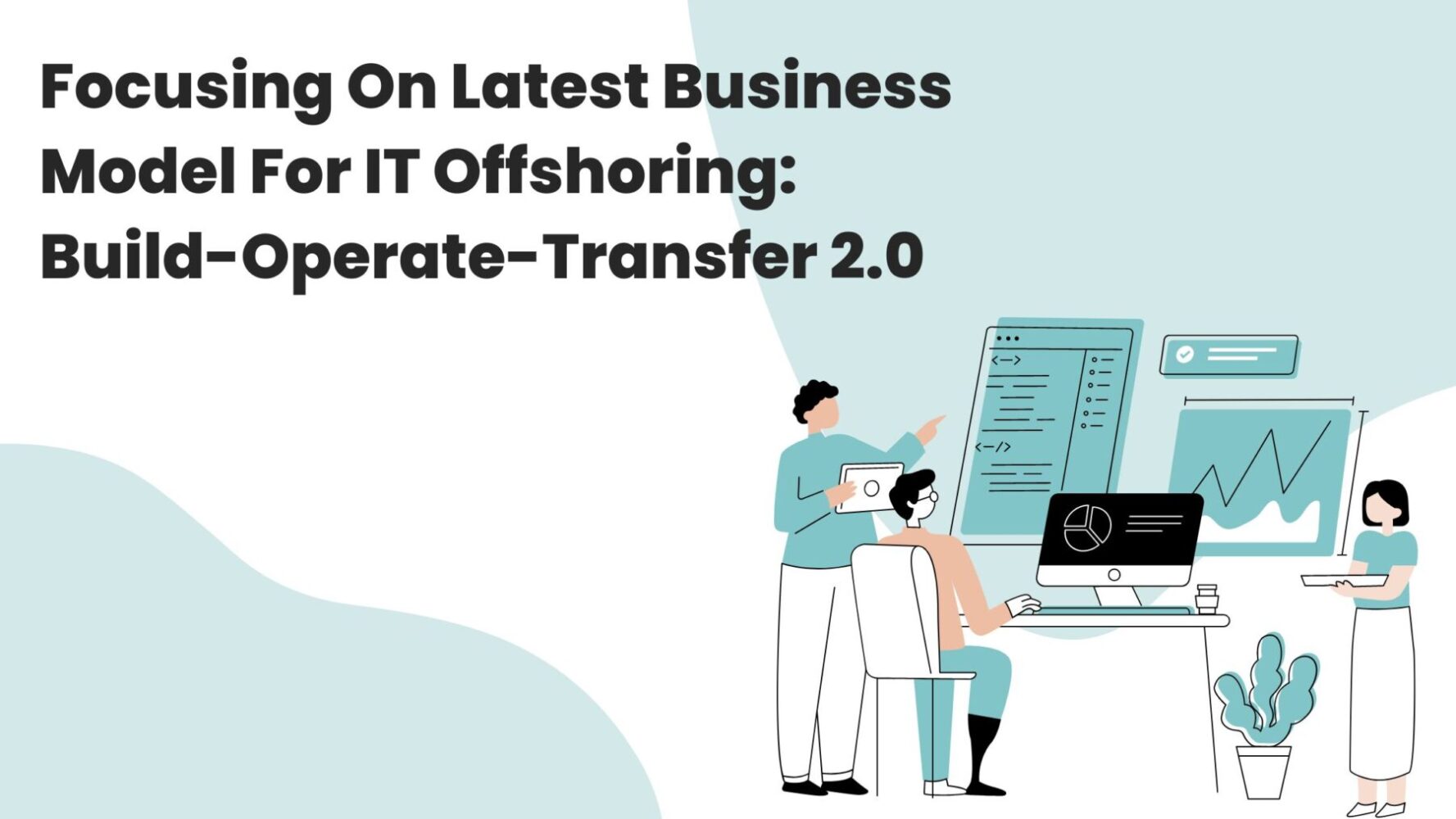In order to craft a successful form of business in foreign lands, you have to wisely focus on your business model. There are some popular variants available and those are joint venture, fee-for-service, build operate transfer, and even captive operations. Before focusing on the right kind of web development services, looking for the major business model is vital.
- The choice solely depends on the needs for data security, IP protection, flexibility, talent availability, and set-up time.
- There are primarily two major cases when outsourcing seems to be a profitable notion for any product IT firm.
- The first one will be to solve short-term tasks that will not require constant cooperation.
- However, in order to cover the long-term run, you might want to hire people with the same effectiveness and mindset. So, moving on with the build-operate-transfer model seems to be your saving grace for that.

source: bestarion.com
The traditional form of build-operate-transfer
BOT or built-operate-transfer is a common model used in IT off-shoring. As a major rule, the tech company will choose an offshore partner for establishing a software development center anywhere else, abroad.
- This process calls for building, operating, and transferring development offices with the same team.
- The BOT version in tech will not involve the current public sector. However, the idea will remain the same.
- The main goal is to share the risks and reduce costs.
Check-in with the companies dealing with web application development to help you understand more about the BOT module. The team from Webdecorum is here to help you address your needs big time and get all your queries answered.
Risks involving traditional BOT:
IT firms are the main competitors to product companies. So, in the traditional BOT module, intellectual property and confidential information might be in danger.
As a major rule, the R&D team provides management indirectly through a local service provider. So, there is hardly any guarantee that the development team will not check in your information to work with your said competitors.

source: sketchbubble.com
The value of BOT 2.0:
In case taking risks is not what you are looking for, then you might have to pay attention to an improved model under BOT 2.0. Understanding it in detail is important and the reliable ios app development company might want to share some of their knowledge with you for a better grip on the new model.
- The “build” portion implies setting up a software R&D office offshore.
- Here, the local service provider is the one to hire the developers’ team for you and even get you office space.
- As you are playing the role of a client, you have to keep total control over all operations and then pay the monthly bills.
- Then you have the “operate” stage, where the focus remains on operational management.
- Here, you might have to stay completely focused on the product while the provider takes care of your payroll, accounting, HR sections, and accounting services.
- You will get legal support from the service providers as well, along with some much-needed financial consultations.
- Then, it is about focusing on the “transfer” stage. It is mainly carried out whenever the client plans to take over the operational management from the service firm.
- There won’t be any transfer as you are the sole owner of the project, from the get-go.
- When you think you are all set to support the R&D office without any secondary help, you don’t have to prolong the agreement anymore.
- When compared to the traditional BOT section, in BOT 2.0, termination is not chargeable and won’t need any added fee.
The difference between BOT and BOT 2.0:
The traditional module and its new version will have some serious differences in between. Focusing on the differences beforehand is a great call to cover.
- At first, you have BOT 2.0, where you own the project from the starting point. It will include the team of in-house developers, software, equipment, and also the final product.
- In BOT 2.0 module, it is your provider who will set up a complete offshore development office for you, as per your needs, and will further help you to run it until you feel you are independent enough to control it on your own, without secondary help.
- The service firm will not have any access to core development. So, all your intellectual property rights will remain secure under your hold.
- BOT 2.0 will further enable you to avoid the field of “white labeling” as you will have sole control of all the operations right under your brand name.
Contrasting to these points, as mentioned above, the traditional model will use the resources of the service firm that launches the project and can complicate the entire recruitment procedure. Most professionals would love to work for a product company and not quite with a service firm.
Once you have the updated model by your side, you get to regulate the services that your firm requires depending on the needful services. So, as a client, you have full liberty to decide what the R&D office needs and order the offshore services in that manner.
Focusing on termination:
While determining the differences between BOT and BOT 2.0, you have to focus on the termination matter as well. If you plan to terminate the BOT contract, you might have to pay some fees upfront. But, with the 2.0 model, you don’t have to worry about any single payment extra because termination is free of cost. So, you have the liberty to stop the work anytime you want and don’t have to pay additional charges for that.
Under BOT 2.0, there won’t be any transfer fee as you will be the original owner of your offshore firm. So, focusing on the BOT 2.0 module will have a lot of promising advantages to them. This module works best for IT product companies that are willing to go offshore.
In order to know more about the BOT 2.0 module and its functions, catch up with the Webdecorum team to the rescue.
For more information and free consultation, please contact us at info@webdecorum.com or by click here.




